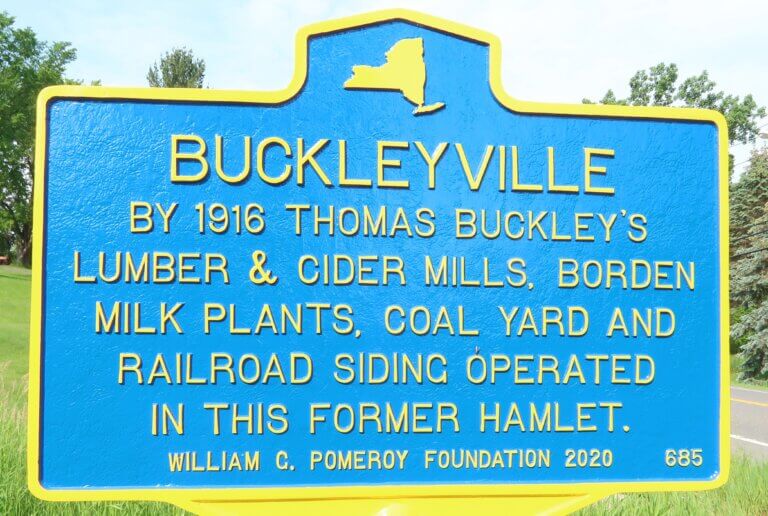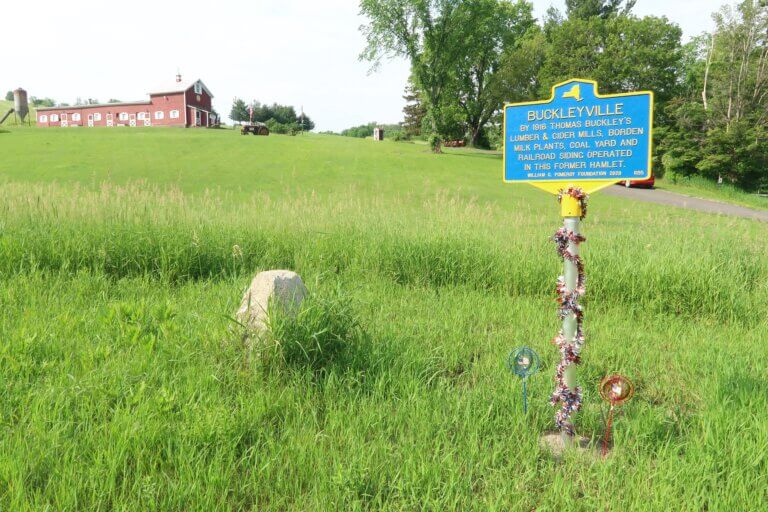BUCKLEYVILLE
- Program
- Subject
- Location
- Lat/Long
- Grant Recipient
-
NYS Historic
-
Industry & Commerce
- 2562 NY-66, Chatham, NY 12037, USA
- 42.343939, -73.60613
-
Town of Ghent
BUCKLEYVILLE
Inscription
BUCKLEYVILLEBY 1916 THOMAS BUCKLEY’S
LUMBER & CIDER MILLS, BORDEN
MILK PLANTS, COAL YARD AND
RAILROAD SIDING OPERATED
IN THIS FORMER HAMLET.
WILLIAM G. POMEROY FOUNDATION 2020
The hamlet of Buckleyville, New York is located a short distance from the New York and Massachusetts state line, in the Town of Ghent. Named for local businessman Thomas S. Buckley, Buckleyville was described in an August 1, 1911 edition of The Columbia Republican as follows:
Buckleyville between Ghent and Chatham is spreading out toward both places and forming a nucleus of a new city in Columbia County.
While the area was far from a city, by 1916 several homes as well as a significant amount of industry was established within the hamlet. Some of these industries included Thomas Buckley’s lumber and cider mills, as well as Borden’s milk plants, and Reynold’s coal yard. Another important factor in the development of Buckleyville was the addition of railroad siding, defined as a short stretch of railroad track used for storing stock or allowing trains on the same line to pass. A July 21, 1906 article from the Chatham Courier detailed the railroad siding:
Work on the new side track at Buckleyville is nearing completion. This siding now extends from the milk station to the Blinn Crossing, and will accommodate a full train of cars, a spur track runs from this siding into Buckley’s mill, this will afford an opportunity for him to handle cider apples, unloading directly from the car into the hopper, and the cider vats will be so arranged that empty barrels can be placed in the car and filled by use of a hose. Two years ago Mr. Buckley shipped about thirty cars of cider in one season, notwithstanding the inconvenience of loading and unloading.
The rail siding positively impacted the hamlet’s local industries as well as the increased the efficiency of Buckley’s cider mill. While these early businesses no longer exist, the hamlet of Buckleyville still does, serving as a reminder of the community’s origins and early history.


